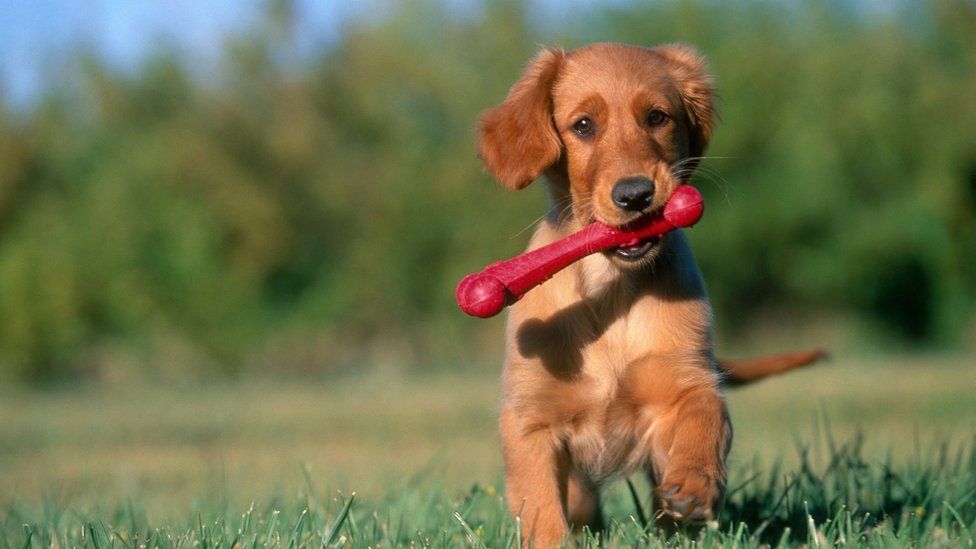'Puppy talk' - why do we use it and do dogs respond?
- Published

Scientists have decoded "dog-directed speech" for the first time, and they say puppies respond to it.
Puppies reacted positively and wanted to play when researchers in France played them a tape of phrases like, "Who's a good boy?''
However, the international team of researchers found that adult dogs ignored this kind of speech.
When we talk to dogs, we often speak slowly in a high-pitched voice, similar to the way we talk to young babies.
The researchers think this way of talking may be our natural way of trying to interact with non-speaking listeners.
Prof Nicolas Mathevon of the University of Lyon/Saint-Etienne in France said pet-directed speech is similar to the way we talk to young infants, which is known to engage their attention and promote language learning.
"We found that puppies are highly reactive to dog-directed speech, in the absence of any other cues, like visual cues," Prof Mathevon told BBC News.
"Conversely we found that with adult dogs, they do not react differentially between dog-directed speech and normal speech."
The scientists recorded people saying the sentence: "Hi! Hello cutie! Who's a good boy? Come here! Good boy! Yes! Come here sweetie pie! What a Good boy!" as if they were speaking to a pet.
This was played back through a loudspeaker to dogs of all ages and compared with normal speech.
The researchers also found that human speakers use dog-directed speech with dogs of all ages even though it is only useful in puppies.
"Maybe this register of speech is used to engage interaction with a non-speaking [animal] rather than just a juvenile listener," said Prof Mathevon.
Dogs have lived close to humans for thousands of years, which is reflected in mutual understanding and empathy.
"Dogs have been selected by humans for centuries to interact with us," he added. "Maybe we have selected puppies that want to play or engage in interaction with us.
"And maybe older dogs do not react that way because they are just more choosy and they want only to react with a familiar person."
Baby face
The experiment adds a new dimension to the idea that we talk differently to puppies because we are swayed by their cute ''baby-like'' appearance.
This theory - known as the baby schema - suggests we respond to the faces of baby animals in a similar way to those of human babies because we want to take care of them.
"One of the hypotheses was that we humans use this dog-directed speech because we are sensitive to the baby cues that come from the face of a small baby as we are sensitive to the faces of our babies," said Prof Mathevon.
"But actually our study demonstrates that we use pet-directed speech or infant-directed speech not only because of that but maybe we use this kind of speech pattern when we want to engage and interact with a non-speaking listener.
"Maybe this speaking strategy is used in any context when we feel that the listener may not fully master the language or has difficulty to understand us."
Dr David Reby, a psychologist at the University of Sussex, said the research could lead to better ways for humans to communicate with animals.
"There could be a practical use if we identify in the long term ways to speak to dogs that help and support their acquisition of new commands."
The research is published in Proceedings of the Royal Society of London B- Biological Sciences.
Follow Helen on Twitter.